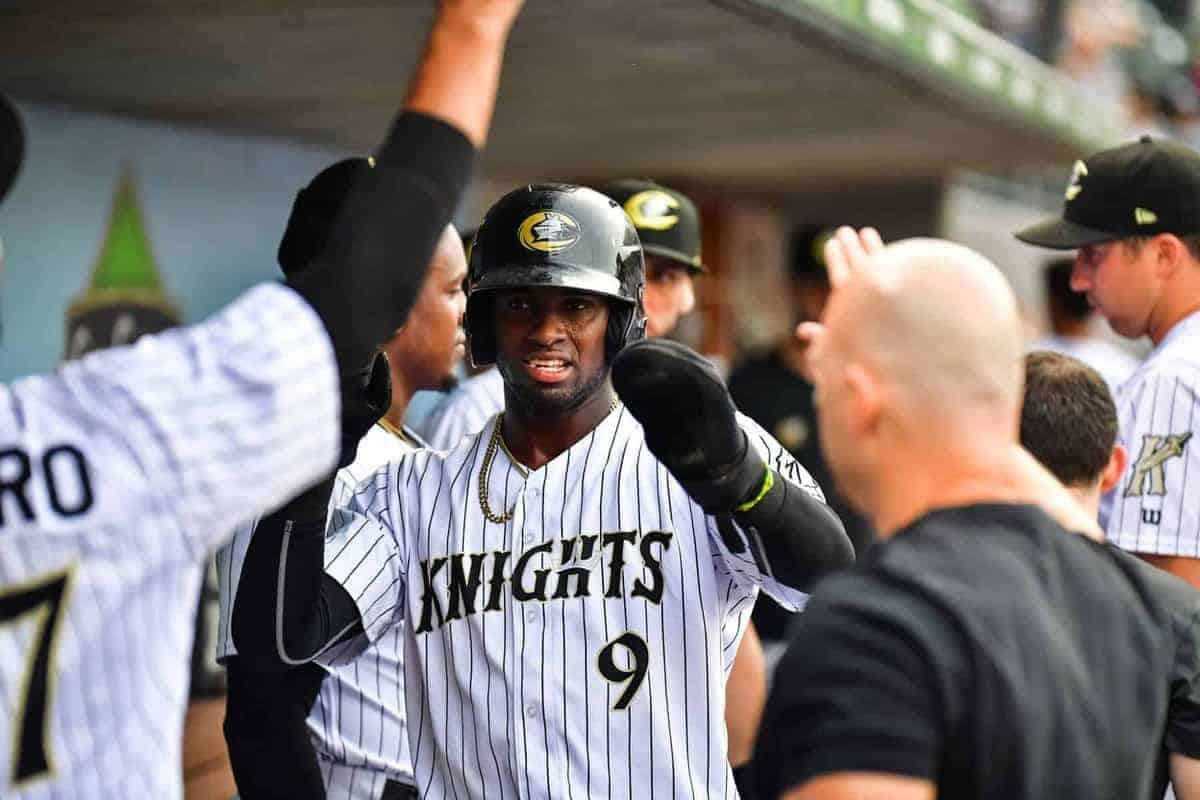As prospect list season gets underway, the White Sox's forest isn't as impressive as it used to be, so we'll be spending more time talking about the trees.
The White Sox have four players with substantial histories and a a lot of enthusiasm no matter how you weigh their weaker sides. After that, the exercise takes a speculative turn even after adjusting for the idea that the whole thing is about speculation. One has to pit recent draft picks -- high schoolers, no less! -- against guys who suffered injuries or other setbacks in a conversation about whether no track record is better than a blemished one.
Baseball America took the first crack at it by posting its top 10 list on Monday, and it shows what a difference a year can make. Last year's lists generally had all the same players seven spots deep, followed by an interchangeable second tier of up-and-comers for the next seven.
This year's group devolves into the aforementioned debate by pick No. 5. By the ninth prospect, it's more about who can get up off the mat.
| Rank | 2018-19 | 2019-20 |
|---|---|---|
| 1 | Eloy Jiménez | Luis Robert |
| 2 | Michael Kopech | Andrew Vaughn |
| 3 | Dylan Cease | Michael Kopech |
| 4 | Nick Madrigal | Nick Madrigal |
| 5 | Luis Robert | Matthew Thompson |
| 6 | Micker Adolfo | Jonathan Stiever |
| 7 | Dane Dunning | Andrew Dalquist |
| 8 | Blake Rutherford | Steele Walker |
| 9 | Luis Gonzalez | Dane Dunning |
| 10 | Steele Walker | Blake Rutherford |
Looking at this list, I can see at least three subplots that could unfold with a fair amount of variance as subsequent rankings are released.
No. 1: Differentiating Thompson from Dalquist. Up until now, the White Sox's second- and third-round picks have been joined at the hip, both inside and outside the organization. Thompson was drafted a round earlier, but his bonus was only $100,000 more than the one Dalquist received. You can count each pitcher's pro innings total on one hand. Thompson's stuff was seen as more electrifying at its peak, but he had difficulty summoning it with consistency his senior season, while Dalquist reached a new level with his spring performance.
Baseball America put the prep pitchers next to each other on their midseason list, but their full evaluation inserts a cushion between them for the first time. Granted, it's only one player, but it's something. Thompson gets the edge for having a higher upper range of power, saying he works 93-96 with a strong curveball when he's on his game. Dalquist's arsenal starts at 90-94, but there's less variation start to start.
No. 2: Putting stock in Stiever. With three of the top four pitching prospects sidelined by injuries, Stiever seized the opportunity and put himself on the map with 154 strikeouts to 27 walks over 145 innings, and a sterling 2.15 ERA at Winston-Salem over the second half of the season. While he was a collegiate pitcher facing A-ball opponents, he wasn't old for the level. He just wasn't young for the level either, so there's some mystery about whether upper-level hitters will find his stuff that daunting.
Nobody seems to doubt his fastball, either or the life or the location. BA says he just needs to establish a true plus breaking ball between his curveball and slider (and it seems like his curveball took the lead last year).
No. 3: Walker, same thing. Now Walker is an example of a guy who was a little too old for the level. He and Stiever were both in their age-22 seasons, but Walker turned 23 in July, whereas Stiever won't reach that age until next May.
The age poses problems, especially when the performance against Carolina League is pitching isn't all that loud. Compare these Winston-Salem Dash outfielders from the past two seasons:
| BA | OBP | SLG | BB% | K% | |
|---|---|---|---|---|---|
| Player A | .293 | .345 | .436 | 7.0 | 18.5 |
| Player B | .269 | .346 | .426 | 9.5 | 14.2 |
You'd probably be inclined to give Player B the edge in future viability due to the slight-but-detectable edges in ISO, walk rate and strikeout rates. But what if I add their ages?
| Age | BA | OBP | SLG | BB% | K% | |
|---|---|---|---|---|---|---|
| Player A | 21 | .293 | .345 | .436 | 7.0 | 18.5 |
| Player B | 22 | .269 | .346 | .426 | 9.5 | 14.2 |
Now that becomes a lot tougher to tell whether Walker's performance (Player B) is meaningfully different from Blake Rutherford's 2018 line (Player A). Walker feels newer than Rutherford, but he's actually 11 months older, and thus his timetable isn't as forgiving should Birmingham suffocate his fringe power in a similar fashion.
If I had to guess, I'd say putting the ball over the fence comes more naturally to Walker, even if he only had a three-homer edge in Winston-Salem (10 to seven). The Southern League is going to put that ability to the test, and perhaps he and Rutherford will occupy the same level at the same age to allow the scientific method to play out.





